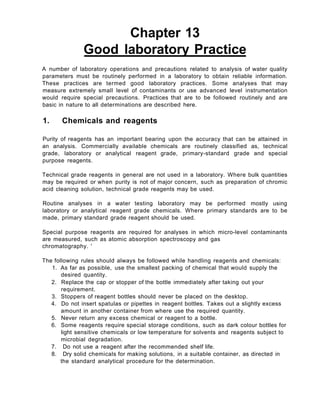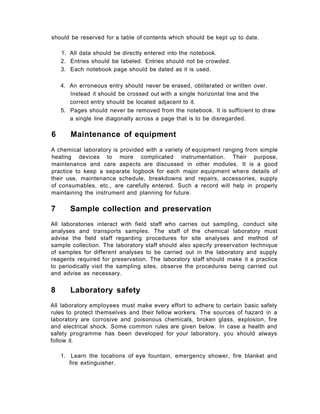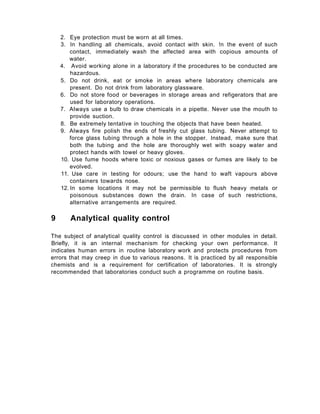This document discusses good laboratory practices for obtaining reliable water quality analysis results. It covers topics such as chemical and reagent purity, glassware cleaning, distilled water quality, weighing practices, data recording, equipment maintenance, sample collection and preservation, and laboratory safety. Adhering to standard practices in these areas helps ensure accurate and consistent analysis results.




